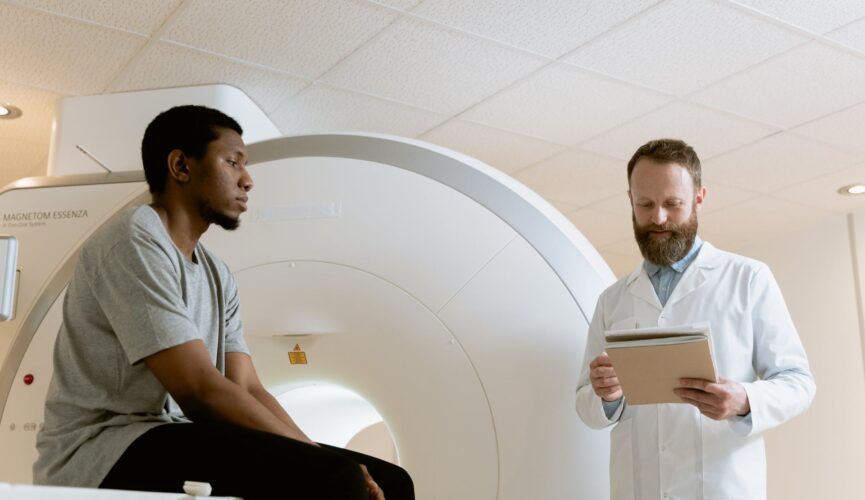In today’s era, medical technologies have revolutionized healthcare, offering unprecedented ways to understand diseases and enhance disease prevention. These innovative tools and techniques have undoubtedly molded the landscape of modern medicine, playing a crucial role in saving countless lives worldwide. In this article, we will explore some of the most remarkable medical technologies that contribute to disease prevention and treatment, shedding light on their profound impact on the field of healthcare.
Unveiling the Wonders of Imaging Technologies
One of the most remarkable advancements in medical technology lies within the realm of imaging. These cutting-edge techniques not only enable healthcare professionals to visualize the intricacies of the human body, but they also assist in early disease detection. Magnetic Resonance Imaging (MRI), Computed Tomography (CT) scans, and X-rays are just a few examples of diagnostic tools that have transformed the field.
MRI scanners utilize powerful magnets and radio waves to create detailed images of the body’s internal organs and tissues. By providing a clear view of abnormalities, such as tumors or lesions, MRI helps doctors make accurate diagnoses and plan appropriate treatments. Similarly, CT scans employ a series of X-rays from different angles to generate cross-sectional images, allowing physicians to detect various conditions, including lung cancer, brain disorders, and cardiovascular diseases.
These imaging technologies have revolutionized disease prevention by enabling physicians to identify potential health risks at an early stage, often saving lives through prompt intervention.
Mastering Genomics for Personalized Medicine
Advancements in genomics have unlocked a new realm of possibilities in disease prevention and treatment. The Human Genome Project, completed in 2003, marked a milestone in unraveling the genetic blueprint of human beings. This breakthrough has paved the way for personalized medicine, tailoring healthcare to an individual’s unique genetic makeup.
Sequencing the DNA of patients allows healthcare practitioners to identify genetic markers associated with inherited diseases and susceptibilities to certain conditions. Armed with this knowledge, they can create personalized treatment plans, optimizing medications, dosages, and therapies to suit individual patients.
Furthermore, genomics has been instrumental in the realm of cancer treatment. By analyzing the genetic mutations specific to a patient’s tumor, oncologists can prescribe targeted therapies that have a greater chance of effectively eradicating the cancer cells. As a result, patients experience improved outcomes and reduced side effects, all thanks to the potential of genomics in healthcare.
The Power of Telemedicine in Disease Management
Telemedicine, the fusion of healthcare and technology, has emerged as a game-changer, particularly in recent times. This revolutionary approach facilitates remote access to medical expertise, breaking down geographical barriers and ensuring that patients receive timely care.
Through telemedicine, patients can consult with healthcare professionals via video calls, minimizing the need for physical visits. This not only saves time and money but is also particularly invaluable for individuals residing in remote areas with limited access to healthcare services.
During the ongoing COVID-19 pandemic, telemedicine has played a vital role in reducing the risk of infection by allowing patients to consult with medical professionals without being physically present in healthcare facilities. By harnessing the power of communication technologies, telemedicine ensures that disease prevention and management remain uninterrupted, even in times of crisis.
Innovations in Surgical Techniques: Minimally Invasive Procedures
Advancements in medical technologies have revolutionized the field of surgery. Traditional open surgeries, which often involve large incisions and long recovery times, are increasingly being replaced by minimally invasive procedures, thanks to the advent of innovative tools and techniques.
Laparoscopic surgeries, for example, have transformed the landscape of abdominal surgeries. Instead of making large incisions, surgeons create tiny keyhole-sized openings, through which they insert a camera and specialized instruments. This approach reduces postoperative pain, lowers the risk of complications, and shortens hospital stays, ultimately improving patients’ quality of life.
Similarly, robotics-assisted surgeries have gained popularity in recent years. With the assistance of robots, surgeons can perform complex procedures with enhanced precision, minimizing the potential for human error. These robotic systems provide a greater range of motion and magnified 3D visualization, allowing surgeons to accomplish intricate tasks with utmost accuracy.
Concluding Remarks
As medical technologies continue to evolve at an exponential pace, the future of healthcare looks brighter than ever. From groundbreaking imaging techniques to personalized medicine, and from telemedicine to minimally invasive procedures, these advancements have indubitably saved countless lives by enhancing disease prevention and treatment.
It is imperative for healthcare professionals and consumers alike to stay updated with these breakthroughs. By embracing the potential of medical technologies, we can shape a healthier and more efficient healthcare system, ensuring that the benefits of these advancements reach every individual in need.
So, let us marvel at the wonders of medical technologies and embrace them as vital tools in our quest for a healthier, happier, and disease-free world.
